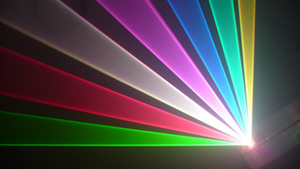what sort of shutters are available, and where do i buy one??
can i design and build my own? what is the minimum action time? what are the tripping requirements?
The requirement is spring return to zero on closure or power failure.
Typical devices are open loop galvos with a torsion wire such as gm20 actuators, GM734, g330 galvos, or positive action rotary solenoids such as ledex. There is no such thing as a CDRH approved shutter, but there are ones that have passed through the process in the past and are commonly accepted by the industry . time will be a few tens of milliseconds, but there is no requirement other then a fast and positive spring return closure. It must be "fail safe", ie you need the spring closure, you cannot depend on electronics to close it. IE no model airplane servos etc If your going for high power, you buy something like a Nanometer Products inc Fast shutter. The idea is to use a device with proven reliabilty, and you buy something that is similar to medical or aircraft grade.
also, if i get approval for my laser with 1 green laser, and then add red and blue later, do i reapply? how does that work?
YOU can add lasers, but you design it up front for a range of lasers, mine says YAG/ION to 25 watts pulsed and cw 450-670 nm internal or external lasers. HINT, you do not declare what is in the box, only what it can do. Ie you dont say, only works with Coherent Star IIs with low divergence optics.. Then when they find it hooked to a lexel 88 your in violation. Ie you would state internal lasers "diode pumped solid state and direct diode lasers -500 mW total power 440 to 670 nm". for example.
But there is a limit, dont variance for a 60 watt KTP 532 if your only going to ever use 1 watt of solid state, unless you like frequent inspections. Oh and you should know, the inspector can show up at any time and you have no choice but to let them in. They usually call first and set up a date and time, but they can pop in at all hours, even if the unit is at your house and in storage. Think of it as them having a permanent warrant to search your projector. The guy has a badge, but no gun, but he/she has usually been to Glenco and trained as a federal LEO. Google Glenco, Georgia.
The projector is a black box except for safety systems and labling. Those are highly detailed with schematics. Everything else is a block diagram, Your operators manual shows "typical". not exact setups and is labeled as such. You do not box yourself into a limited setup, unless your doing a fixed install, and then you do that only when someone else is operating it and you want off the hook if a idiot outside or your control, ie a club employee, makes illegal changes to the beam path. Ie you sell them a unit and are making them responsible for quality assurance.
Do not depend on the lasers built in modulation for safety.
also, what exactly are the requirements on an output meter?
What output meter? That is medical laser.
also, when power is cut before or after the laser power supply, does the laser instantly stop output, or fade over period of time?
Right now, the shutter must close as close to instantly as possible.
also, is the blanket variance for the laser show and output? or the venue as well? i cant find that. can i measure outputs and everything at my house for other areas? or does everything need to be on site?
Ah, Quality control. You have a pre show checklist, a post show checklist, and a show report log as part of your owners manual. You can set up for touring if you tour, its a check box on the form. Large fixed installs get their own fixed variances, there is no hard and fast rule on which box you check, unless its mobile.
when i build the projector, does it need to be inspected, or do i send pictures and a written report?



 Reply With Quote
Reply With Quote




